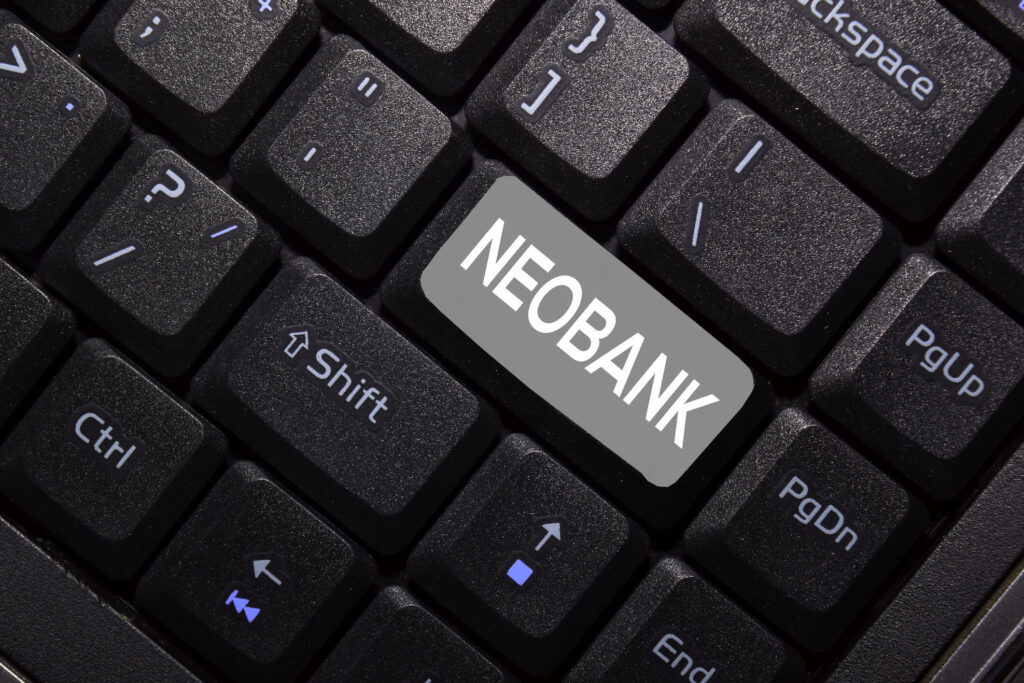
By American May 2, 2024
In the ever-evolving landscape of financial services, the emergence of neobanks represents a significant shift towards digital banking solutions. This article provides a comprehensive exploration of neobanks, discussing their business models, comparisons with traditional and online banks, their advantages, potential risks, and addressing frequently asked questions.
The Evolution and growth of neobanks in the financial industry has been remarkable. Neobanks have emerged as a disruptive force, leveraging technology to provide innovative and customer-centric financial solutions. They have gained popularity among tech-savvy consumers who value convenience, accessibility, and personalized services.
What Is A Neobank?
A neobank is a type of digital bank without any physical branches. Operating exclusively online, neobanks offer traditional banking services through mobile apps and other digital platforms. Unlike traditional banks, neobanks rely heavily on technology for delivering services and enhancing customer experiences, often leveraging big data, artificial intelligence, and machine learning to tailor their offerings to individual needs.
Overview of the services offered by neobanks
Neobanks offer a wide range of services that cater to the needs of modern consumers. These services include:
- Checking accounts: Neobanks provide digital checking accounts that offer features like instant notifications, real-time balance updates, and easy money transfers. Some neobanks also offer physical debit cards for ATM withdrawals and in-store purchases.
- Savings accounts: Neobanks offer high-interest savings accounts with competitive rates, often surpassing those offered by traditional banks. These accounts are designed to help customers grow their savings effortlessly.
- Loans: Neobanks have also ventured into the lending space, offering personal loans, business loans, and even mortgages. The application process is typically streamlined and can be completed entirely online, making it convenient for borrowers.
- Budgeting tools: Neobanks provide users with advanced budgeting tools and spending analytics. These features help customers track their expenses, set financial goals, and make informed decisions about their finances.
How Do Neobanks Make Money?
Globally, the industry has seen significant growth with an estimated revenue of around $6.8 billion in 2021, indicating a sustained upward trajectory. Neobanks generate revenue through various channels, including interchange fees, subscription services, and interest on loans. NuBank, for instance, stands out with impressive earnings of $1.7 billion, underscoring its dominance in Latin America. Such figures illustrate the robust financial performance and growing customer base that neobanks continue to enjoy worldwide
Neobanks, also known as “challenger banks”, are financial institutions that operate exclusively online without traditional physical branch networks. These modern entities have transformed the banking landscape by leveraging technology to offer user-friendly, accessible, and often lower-cost services compared to traditional banks. Here’s a detailed look at how neobanks generate revenue:
1. Interchange Fees
One of the primary sources of income for neobanks is interchange fees. These are fees charged to merchants every time a customer uses a debit or credit card to make a purchase. The fee is typically a small percentage of the transaction amount. Since neobanks issue cards and manage payment processing, they receive a portion of these fees from the merchant’s bank.
2. Subscription Fees
Some neobanks offer premium accounts that require customers to pay a monthly or annual subscription fee. These premium accounts often come with additional benefits such as higher interest rates on savings, lower foreign exchange fees, enhanced customer support, and even perks like travel insurance or exclusive partner discounts.
3. Loan Interest
Like traditional banks, many neobanks extend loans to consumers and businesses. These can include personal loans, credit lines, and mortgages. Neobanks earn money from the interest charged on these loans. The interest rate varies depending on the creditworthiness of the borrower and other market conditions.
4. Treasury Management Services
Neobanks also invest customer deposits in various financial instruments such as government securities, corporate bonds, and other safe, short-term investments. The returns on these investments contribute to their income.
5. Fees for Additional Services
While many basic services at neobanks are free, they often charge fees for extra features. These can include fees for withdrawing cash from ATMs beyond a certain limit, transaction fees for international transfers, or penalties for early withdrawal from fixed deposits.
6. Technology and Data Services
Neobanks use cutting-edge technology to collect and analyze large amounts of data on customer behavior, spending patterns, and financial needs. This information can be valuable, and some neobanks may monetize this data by offering insights and targeted financial products not only within their platform but also by partnering with fintech companies and other financial service providers.
7. Marketplace Banking
Many neobanks operate a marketplace model where they partner with other service providers to offer additional products such as insurance, investment products, or utility services. They earn commissions or fees for referrals made through their platform.
Popular Neobanks: A Look at the Market Leaders
Neobanks, also known as digital-only banks, have disrupted the traditional banking industry by offering streamlined, customer-centric financial services through mobile and desktop applications. These institutions do not have physical branches and utilize cutting-edge technology to offer innovative banking solutions. Here’s a look at some of the leading neobanks that have gained popularity worldwide due to their unique offerings and business models:
1. Revolut
Founded in 2015 in the UK, Revolut started as a travel card providing cheap exchange rates, and has since expanded into a broad financial services platform. Revolut offers currency exchange, global spending, peer-to-peer payments, and has recently added stock trading and cryptocurrency exchange to its suite of services. Its ability to provide financial services across borders with minimal fees has made it a favorite among travelers and international users.
2. N26
Based in Germany, N26 operates in various European countries and has recently expanded to the US. It is known for its clean, user-friendly interface and straightforward banking options. N26 offers a range of accounts, including standard, business, and premium accounts, which all come with a set of features tailored to meet different customer needs. The bank emphasizes security with features like real-time transaction alerts and the ability to lock and unlock cards via the app.
3. Chime
A frontrunner in the U.S. neobank market, Chime offers fee-free financial services through its mobile app. It is particularly popular for its automatic savings features, like rounding up transactions to the nearest dollar and depositing the difference into savings accounts. Chime also provides early paycheck access, a major draw for users who need to stretch their cash flow between pay periods.
4. Monzo
UK-based Monzo has won over customers with its bright coral debit cards and community-oriented approach. It offers features such as instant spending notifications, budgeting tools, and “Pots” for setting aside money for specific goals. Monzo has also been proactive in tackling financial crime and improving the banking experience with customer service that is highly rated for its responsiveness and helpfulness.
5. Starling Bank
Also based in the UK, Starling Bank is another significant player in the neobank sector. It appeals particularly to small business owners with its powerful business banking features, alongside personal accounts. Starling offers innovative integrations with other financial tools and services, detailed financial insights, and has also rolled out a suite of lending products.
6. Varo
In the U.S., Varo has made history as the first neobank to receive a national bank charter, allowing it to offer a wider range of products and increase its operational stability. Varo offers premium bank accounts with no monthly fees, high-interest savings accounts, and tech-driven features that cater to tech-savvy consumers looking for a modern banking experience.
7. NuBank
Based in Brazil, NuBank is one of the largest neobanks in Latin America and has expanded its services across the continent. It is celebrated for democratizing access to financial services with low fees and a straightforward, customer-first approach. NuBank offers a range of financial products including credit cards, personal loans, and investment options, all managed through a simple and effective app.
Neobanks vs. Online Banks: Key Differences and Similarities
The financial landscape has seen significant transformation with the rise of digital banking solutions, particularly through the advent of neobanks and online banks. While these terms are often used interchangeably, there are distinct differences as well as similarities between them. Understanding these can help consumers make informed choices about where to manage their finances.
Key Differences
- Regulatory Framework: One of the primary differences between neobanks and traditional online banks lies in their regulatory status. Neobanks often operate under a different regulatory framework because they typically do not possess a banking license themselves. Instead, many partner with established banks to offer banking services without directly dealing with the regulatory complexities and financial requisites of holding a banking license. On the other hand, online banks are generally divisions or extensions of traditional banks with full banking licenses, which means they adhere strictly to banking regulations.
- Business Model: Neobanks usually employ a technology-driven business model that emphasizes software and app innovations, aiming to disrupt traditional banking with user-friendly interfaces and customer-centric services. Their model tends to focus more on accessibility and personalized financial products. Traditional online banks, while also utilizing technology, often replicate the traditional banking model but operate online, offering a broader range of services including loans, credit cards, and investment services that mirror those of brick-and-mortar institutions.
- Product Offerings: While both neobanks and online banks offer digital-first banking solutions, neobanks frequently concentrate on niche markets or specific customer needs, such as no-fee checking accounts, international money transfers, or budgeting tools integrated directly into their apps. Traditional online banks offer a more comprehensive suite of banking services that cover all typical banking operations, often including extensive lending and investment services.
Key Similarities
- Technology Use: Both neobanks and traditional online banks leverage technology to enhance user experience and streamline operations. They utilize mobile apps, online tools, and digital customer support systems to provide 24/7 banking services, reflecting a shift towards tech-driven financial services.
- Reduced Physical Presence: Both types of banks minimize or completely eliminate the need for physical branches. This not only reduces operational costs but also appeals to a tech-savvy, younger demographic that prefers conducting financial transactions online.
- Focus on Customer Experience: Neobanks and online banks aim to improve the customer experience by reducing bureaucracy, simplifying user interfaces, and providing faster service. This focus on customer satisfaction is central to their operational ethos, distinguishing them from more traditional banking institutions that might not prioritize these aspects as strongly.
Future Trends and Innovations in Neobanking
The neobanking sector is rapidly evolving, driven by technological advancements, changing consumer expectations, and an increasingly competitive landscape. As we look towards the future, several trends and innovations appear poised to shape the next phase of neobanking. Understanding these can provide insights into the future of finance and banking.
1. Artificial Intelligence and Machine Learning
Artificial Intelligence (AI) and Machine Learning (ML) are at the forefront of transforming neobanking services. These technologies enable neobanks to offer personalized banking experiences through predictive analytics and customized financial advice. AI can analyze vast amounts of data to identify spending habits, suggest savings goals, and even predict financial stress before it occurs. This level of personalization not only enhances user engagement but also aids in smarter financial decision-making for consumers.
2. Enhanced Cybersecurity Measures
As digital banking continues to grow, so does the threat of cyber attacks. Neobanks are investing in advanced cybersecurity measures to protect customer data and ensure transaction security. Innovations such as biometric security features, end-to-end encryption, and blockchain technology are becoming more prevalent. These technologies help in creating secure environments that safeguard against fraud and cyber threats, building trust with customers.
3. Integration of Blockchain and Cryptocurrencies
Blockchain technology offers a decentralized record of transactions that is secure and transparent, making it an attractive option for neobanks focused on innovation. Some neobanks are beginning to integrate cryptocurrencies and offer services like crypto trading, crypto wallets, and even interest accounts based on crypto assets. This not only diversifies their product offerings but also positions them at the cutting edge of financial technology.
4. Expansion into Financial Ecosystems
Neobanks are increasingly becoming part of broader financial ecosystems. They are no longer focusing solely on traditional banking services but are expanding into areas such as insurance, investment, and even healthcare. Through partnerships and integrations, neobanks can offer a one-stop-shop experience for financial services, enhancing convenience and accessibility for users.
5. Regulatory Technology (RegTech)
As neobanks expand globally, they face a complex web of regulatory environments. RegTech uses technology to help companies comply with regulations efficiently and at lower costs. Innovations in this area include automated compliance processes, real-time fraud detection, and dynamic risk management tools. As regulations around digital banking tighten, effective use of RegTech will be crucial for neobanks to scale sustainably and securely.
6. Sustainable and Ethical Banking
Consumer demand for sustainability and ethical considerations in banking is rising. Neobanks are responding by promoting green banking initiatives such as paperless operations, funding renewable energy projects, and offering incentives for eco-friendly purchases. This trend not only appeals to environmentally conscious consumers but also aligns with global efforts towards sustainability.
7. Banking-as-a-Service (BaaS)
BaaS platforms allow other businesses to offer banking services by leveraging the existing regulatory and technological infrastructure of neobanks. This trend is enabling a wide array of companies, from tech startups to large retailers, to integrate financial services, thereby democratizing access to banking capabilities.
The Benefits & Challenges of Choosing a Neobank
Choosing a neobank—a type of digital bank without physical branches—can offer modern consumers a range of benefits along with a set of challenges. As the digital landscape continues to evolve, understanding these advantages and potential drawbacks is crucial for anyone considering switching to a neobank for their financial needs.
Benefits of Choosing a Neobank
- Enhanced Convenience: Neobanks operate primarily online, offering services through mobile apps and websites. This digital-first approach means customers can access banking services anytime and anywhere, eliminating the need to visit physical branches. The convenience of managing finances from a smartphone is particularly appealing to tech-savvy generations.
- Lower Fees: Without the overhead costs associated with traditional banks, such as maintaining physical branches and large staffs, neobanks can offer their services with lower fees. This often translates into free account opening, no minimum balance requirements, lower withdrawal fees, and competitive rates on loans and savings.
- Innovative Features: Neobanks are at the forefront of integrating technology in banking, often featuring tools like real-time spending notifications, automated budgeting, and savings tools, as well as personalized financial advice based on AI algorithms. These features can help users manage their finances more effectively and make informed decisions.
- Quick Setup and User-Friendly Experience: Setting up an account with a neobank typically takes just a few minutes, with verification processes that are streamlined and digital. The user interfaces of neobank apps and websites are often designed with a focus on usability, making them intuitive even for those who are not tech experts.
- Focus on Underbanked Populations: Many neobanks target services to populations typically underserved by traditional banks. This includes offering low-cost options for international money transfers, multi-currency accounts, or developing credit products for those with limited credit history.
Challenges of Choosing a Neobank
- Limited Physical Presence: The lack of physical branches can be a double-edged sword. While it adds convenience, it also means there are no in-person services available for complex issues or when a personal touch is needed. This can be a significant drawback for customers who prefer face-to-face interaction.
- Perceived Security Concerns: While neobanks often employ advanced security measures, the entirely digital nature of their operations can lead some customers to worry about the safety of their funds and personal data. The relatively short track record of many neobanks compared to traditional banks can also contribute to this perception.
- Regulatory and Stability Issues: Neobanks face unique regulatory challenges, especially if they operate without a traditional banking license. This can lead to concerns about their long-term viability and the stability of the services they offer, particularly in turbulent economic times.
- Limited Product Offerings: Some neobanks may offer a narrower range of products compared to traditional banks. While they often excel in basic checking and savings products, they might not provide comprehensive options in areas like mortgages, loans, or wealth management services.
- Customer Support Challenges: The digital-first approach can sometimes lead to challenges in customer support. The reliance on chatbots or email support without the option for a phone call can frustrate customers when they need urgent help or detailed assistance.
Different Types of Neobanks
Neobanks, often defined as digital-only banks without traditional physical branches, have disrupted the financial industry by offering more accessible, user-friendly, and cost-effective banking solutions. However, not all neobanks are the same. They can be categorized into different types based on their business models, target markets, and regulatory status. Understanding these distinctions is crucial for consumers and businesses looking to choose a neobank that best fits their needs.
1. Consumer Neobanks
These neobanks focus primarily on individual consumers, offering services such as checking and savings accounts, debit cards, and personal loans. They are known for their consumer-centric features like real-time transaction notifications, no foreign transaction fees, budgeting tools, and savings enhancers. Examples include Chime, Monzo, and N26. Consumer neobanks often appeal to tech-savvy millennials and digital nomads who prefer managing their finances via mobile devices.
2. Business Neobanks
Targeting small businesses, startups, and freelancers, business neobanks provide features tailored to the needs of companies. These include invoicing capabilities, expense management tools, integration with accounting software, and higher limits on transactions. By simplifying financial management tasks, business neobanks like Qonto, Tide, and Holvi help entrepreneurs and small businesses save time and resources that can be better invested in growth and development.
3. Global Neobanks
These neobanks offer multi-currency accounts and are focused on providing financial services to customers who frequently travel or conduct business internationally. They simplify the process of managing money across different currencies and reduce the fees associated with international banking. Revolut and TransferWise (now Wise) are prominent examples, offering currency exchange, international money transfers, and global spending at competitive rates.
4. Challenger Banks
While often used synonymously with neobanks, challenger banks are a specific subtype that operates with their own banking license, distinguishing them from other neobanks that might rely on partnerships with traditional banks for their financial infrastructure. Challenger banks like Starling Bank and Varo (in the US, after receiving its banking charter) offer a full range of banking services and are subject to the same regulations as traditional banks, which often provides an added layer of security and trust to consumers.
5. Green Neobanks
Focusing on sustainability, green neobanks appeal to environmentally conscious consumers by offering banking services that promote or support eco-friendly practices. These banks invest in green projects, offer loans for sustainable initiatives, and create financial products that encourage sustainable consumer behaviors. Aspiration and Tomorrow are examples of neobanks that prioritize environmental considerations in their banking products and operations.
6. Specialized Neobanks
These neobanks cater to specific niches or underserved groups, such as teenagers, students, or certain professions. They design their banking services and products to meet the particular needs of these groups, providing customized features that are not typically available in general-purpose banks. For example, Step and Greenlight offer banking products designed for teenagers to help them manage their money and learn financial literacy skills effectively.
Frequently Asked Questions
Q.1: What is the account setup process for a neobank?
Answer: The account setup process for a neobank is typically straightforward and can be completed entirely online. Customers need to download the neobank’s mobile app or visit their website and follow the instructions to create an account. The process usually involves providing personal information, verifying identity, and setting up security measures.
Q.2: How do I choose the right neobank for my needs?
Answer: When choosing a neobank, consider factors such as the services offered, fees, interest rates, user experience, and customer reviews. It’s also essential to ensure that the neobank is licensed and regulated by the appropriate authorities to ensure the safety of your funds.
Q.3: Are neobanks safe?
Answer: Neobanks prioritize security and invest heavily in robust cybersecurity measures to protect customer data. However, as with any online service, there is always a risk of data breaches or cyberattacks. It’s crucial to choose a reputable neobank and follow best practices for online security, such as using strong passwords and enabling two-factor authentication.
Conclusion
Neobanks have emerged as disruptive players in the financial industry, challenging traditional banking models and offering innovative and customer-centric solutions. With their convenience, accessibility, and personalized services, neobanks have gained popularity among tech-savvy consumers.
While neobanks offer numerous benefits, they also face challenges and risks, such as security concerns and regulatory compliance. However, with the potential to address financial inclusion and the ongoing advancements in technology, neobanks are poised to reshape the future of banking.



